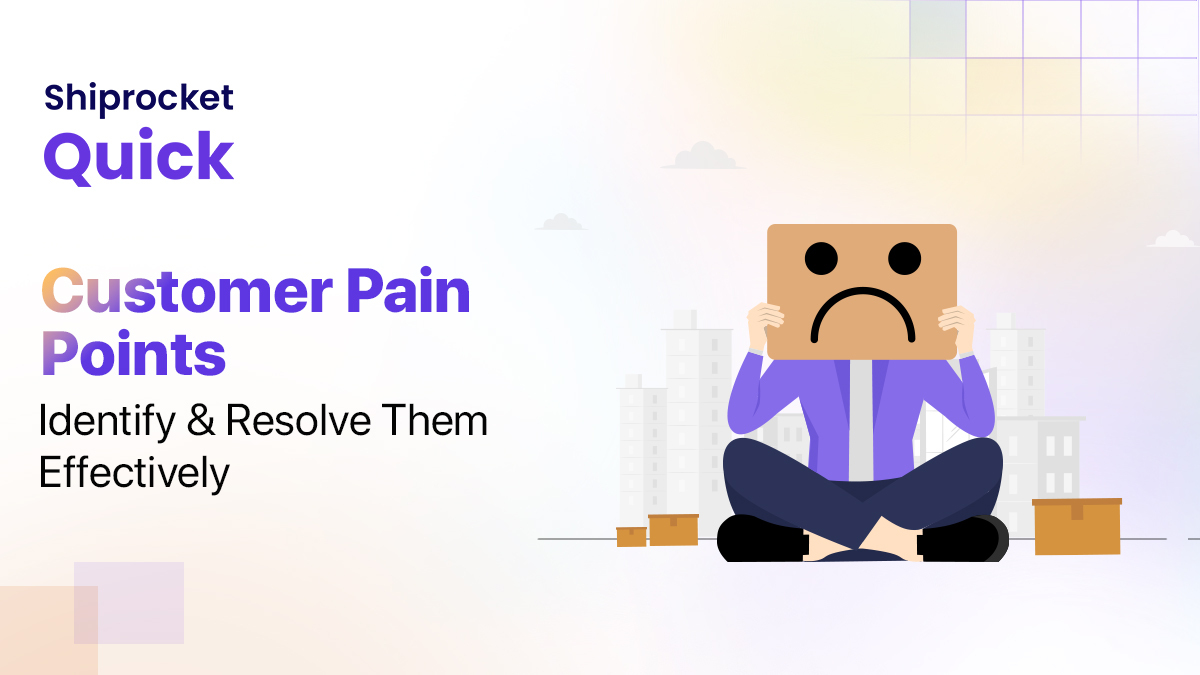Difference Between Consignment and Sale: A Simple Guide
The world of supply chain management (SCM) has many terms that are all used interchangeably in the colloquial sense. When you have an eCommerce business and are shipping orders every day, it is time you understand what each of these terms means. You should use them in the right places to avoid confusion and misunderstandings that can disrupt efficiency and hinder the flow of your supply chain processes.
In today’s world, producers of larger companies do not directly interact with their consumers. They make use of middlemen to get in touch with the buyer. The middlemen are generally both retailers and wholesalers. With the rise in eCommerce and other technologies, producers also link up with other channels to distribute their produce. In this world, a producer or even a wholesaler hires agents in a variety of markets to sell their products on behalf of them for a fee. This type of setting is known as consignment. Sale, on the other hand, is simply a mutual contract between a seller and a buyer.
This blog shines a light on the difference between the two to make you understand how and when these terms must be used. Also, how they connect to be used interchangeably.

What Does a Consignment Mean?
A game plan that implies where the ownership of a product is delegated to an approved outsider or middleman to sell is a consignment. It refers to a simple commercial agreement in which the products are delivered to a retailer or wholesaler by a seller to sell to the consumers. The comparison between the terms consignment and sale is often placed in a grey area and understanding the difference between the two is crucial. The consignor is the person who provides the goods. Hence, manufacturers and producers are the consignors. The agent who is left in charge of selling these goods is known as the consignee. The relationship between a principal and an agent is a brilliant way to determine the relationship between the two. The consignee solely operates on the consignor’s behalf. It is vital to note that the consignee is never the owner of the products designated by the consignor for sale.
When in transit, there is a good chance that the products can undergo damage or spoilage. Even in such situations, the consignor is the owner of the goods and the consignee is nowhere responsible for the same. The loss is completely borne by the seller. The consignee is responsible for the sales aspects based on the instructions provided by the consignor. The consignor, in return, gives the consignee a fee for his troubles and effort post the sales.
Types of Consignment
There are two types of consignments, these include:
- Inward Consignments: When goods and products given by the consignor to a consignee are sold locally or domestically, it is known as an inward consignment.
- Outward Consignment: When a consignor sends goods from one country to another for sale via a consignee, the consignment is known to be outward.
Processing a Consignment
The goods and products to be sold are sent to the consignee by the consignor as a part of the consignment. It is the responsibility of the consignee to segregate the items that are to be sold from those that will not. It means that those products that are damaged or dirty and are not up to the quality of selling are to be segregated and made note of. Only those products that are purchased by buyers are to be listed as a sale. A consignment agreement should always have a list of predetermined terms that determine how the revenue is to be distributed and the duration of the time the goods are to be held for sale. In cases where the consignee fails to sell the products issued within the aforementioned period, the consignor must reclaim the goods. The scan period can also be extended. Ultimately, the consignee is paid by the consignor out of the sales proceedings received.
Key features of a consignment are listed below:
- A consignment is designed to make sales at a profit.
- The consignment is handled by a consignor and a consignee who have the relationship of a principal and an agent.
- The consignee is merely responsible for the products and is not the owner. The earnings made through the sale of the products are given to the consignor.
- The consignee is not responsible for any loss due to the destruction of goods during shipping.
- Unsold goods are returned to the consignor post the period of sale.
- All proceedings irrespective of profit or loss are to be given to the consignor.
The importance of a consignment is given below:
- The consignment operations help producers reach their target audiences and enable the bringing of economies of large-scale production with greater gains. Hence, the production price per unit goes down significantly.
- The consignment agreement serves the manufacturers better as it is beneficial for those who have multiple locations of production across the world. The local agents know the market better, and hence, are more capable of selling the products better at a larger gin margin generating greater revenue.
- The approachability issue between the maker and the buyer can be solved with consignment agreements as the buyer manages to sell their products to the customer by bringing them to their localities.
What is Meant by a Sale?
Although sale and consignment are used interchangeably, they differ largely. A simple transaction struck between two entities in which the swapping of goods for a price is established is known as a sale. It is a contract in which a proposal is made where one entity either buys or sells goods and services for monetary value and the other entity agrees to it. Thus, all the essentials of a contract like consent, the capacity of the entities, the law regulations, and other considerations are well defined.
It is vital to note that a sale is also a bargaining agreement. The risk and the rewards are transferred from the seller to the buyer when goods are purchased.
Notable features of the sale include the following:
- A sale must always entail at least two entities.
- The sole purpose of a sales contract is to exchange goods or services for mutual gains known as price.
- Sale entails an agreement to sell
- There must always be an exchange of goods or services
- The price to be paid must always be money
- Only portable property must be under the category of goods that include products existing at the time of the contact as well as prospective goods.
Consignment vs Sale
| Criteria | Consignment | Sale |
| Definition | When goods are sent from the maker to a middle agent with the intent of sale and a fee for the agent, it is then known as a consignment. | When goods are sent by a maker to a buyer in exchange for money, then it is known as a sale. |
| Ownership | The consignee is never the owner of the product. He is an agent of the consignor and strictly works on behalf of the consignor only. He merely possesses the goods. | The idea of ownership in a sale is transferable. When a buyer gives the seller a product in exchange for money, the ownership is transferred from the buyer to the seller post the transaction. |
| Expenses | When two entities enter into a consignment agreement, the consignee is not liable for anything. All the expenses incurred are to be borne by the consignor. | In a sale agreement, the customer or the buyer is the one who bears all costs after delivery of the product. |
| Relationship | The consignor and the consignee have the relationship of a principal and an agent. | The buyer and the maker share the relationship of a debtor and a creditor. |
| Return of goods | When the goods are not sold within the predetermined time frame, they are returned to the consignor by the consignee. | In a sale agreement, the products once sold cannot be returned. |
| Risk | The entire burden of the risk involved in the goods sent will remain with the consignor until the consignee manages to sell it. | The transfer of risk is immediately shifted to the shoulders of the buyer after the transaction. |
| Account sale | A sale account must be submitted at regular intervals by the consignee to the consignor. | Account of sale is not generally maintained in a sales agreement. |
| Order | A maker or the consignor is bound to send goods to the consignee even without demand or order. | The goods are sent to the buyer only after an order is made. |
Conclusion
Understanding the difference between a consignment and a sale can help any business owner or beginner communicate in the market better. The clarity between the two terms helps them avoid confusion during trading. A consignment is one of many ways that things can be sold. Consignment stores are second-hand shops in many countries worldwide where an agent sells clients used things on behalf of the owners. The price at which the goods are sold is lower than when they were first purchased. The agents receive a percentage of the sale revenues as payment for their services. But not every thrift store is a consignment store. On the flip side, a sale is more of an action that is done upon the demand of a buyer for the exchange of money.
Yes, consignment offers a lot of benefits to both consignors and consignees. For consignors, it reduces costs, gives access to new markets, improves relationships with suppliers, etc. For consignees, it gives access to a wide range of products and increases sales and profits.
The challenges of consignment include limited control and visibility of goods, wasted space for unsold goods, unfair agreement terms, damage risks, logistical issues, inventory management challenges, and more.
Consignment is not the same as selling goods. A consignment is an agreement between the owner of goods and the consignor. The consignee stores and sells goods on behalf of the consignor and earns a profit. A sale, on the other hand, is a simple transaction, with goods being traded between two parties.








Its like you read my mind! You appear to know so much about this, like you wrote the book in it or something. I think that you can do with a few pics to drive the message home a little bit, but instead of that, this is excellent blog. A fantastic read. I’ll certainly be back.